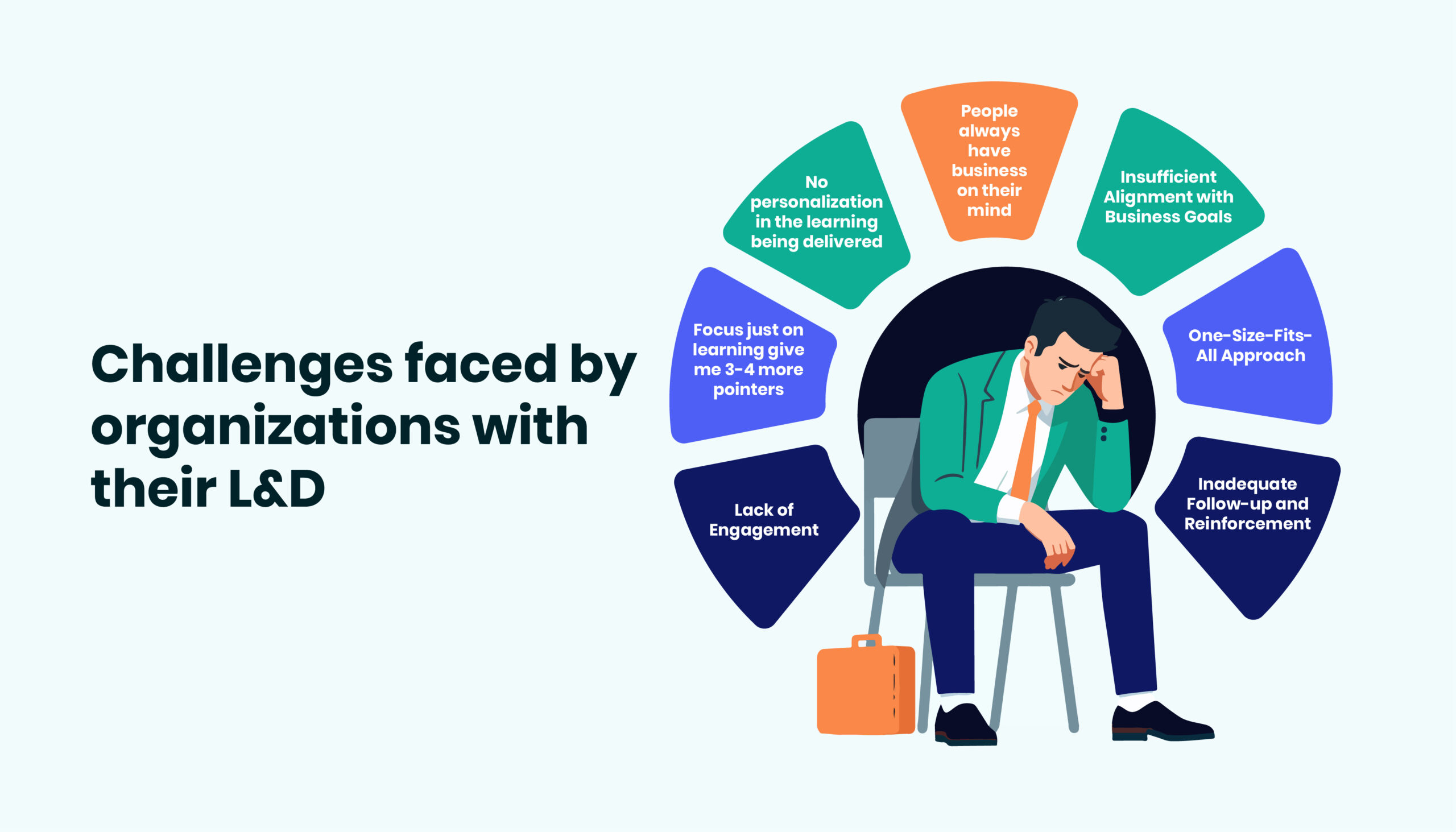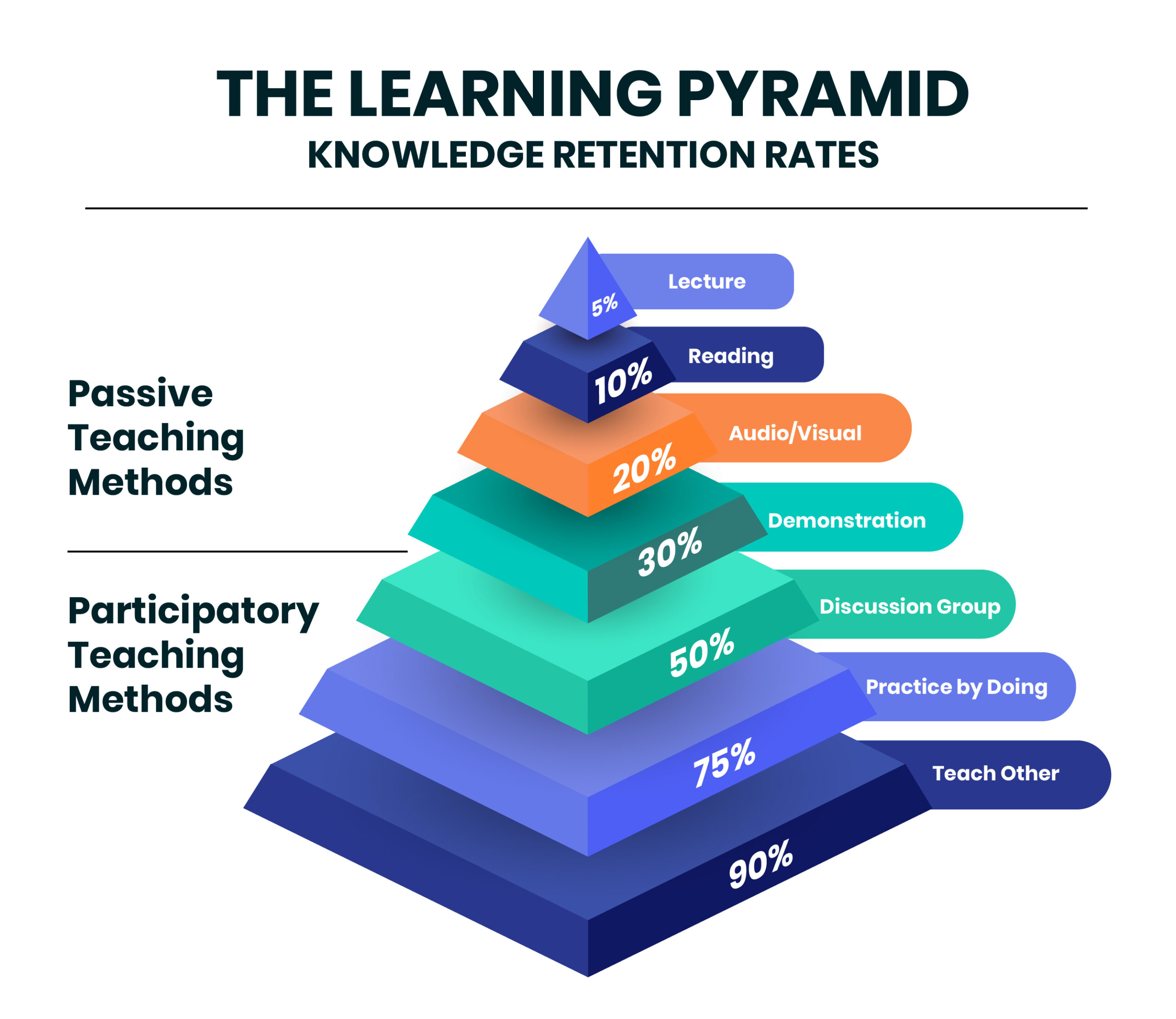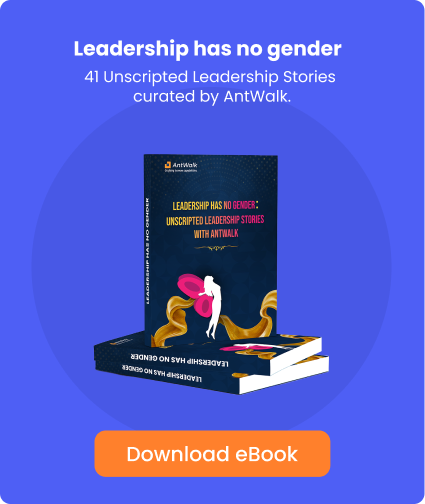Is your L&D strategy truly focused on learning?
Picture this: It’s a Thursday afternoon, and you’re about to join a mandatory Learning & Development (L&D) session. The calendar invite pops up, and as you click the link, you notice the familiar faces of your colleagues on the screen—some eagerly anticipating a break from their daily tasks, others already distracted by other work. You settle in, listen to the presentation, engage in the obligatory group discussion, and then, just like that, the session ends. You return to your work, but deep down, you know nothing has changed. The learning feels superficial, much like those mandatory e-learning modules that pop up towards the end of the year. Remember how everyone rushes to complete them, earphones unplugged and screens minimized, just to check the box? Sure, you might have learned something new, perhaps, but it doesn’t feel like it’ll stick or make any difference in the way you approach your role. Does this resonate with you?
For many professionals, this scenario is all too familiar, specifically the ones who rush to get their mandatory. The excitement of a new role quickly gives way to the realization that they might not be as prepared as they thought. Despite attending numerous L&D sessions, they find themselves questioning whether they have the skills and knowledge to meet the demands of their new position. What went wrong? The answer might lie in the very structure of traditional L&D programs.
The Retreat Mentality: When L&D Becomes Just Another Break
In many organizations, L&D programs have unintentionally become more about taking a break from work than about fostering real growth and development. These sessions, while engaging and often fun, frequently fail to create lasting behavioral change. Sure, they might include activities designed to energize and entertain participants, but when the session ends, how much of that energy translates into improved performance?
Consider the experience of Ravi, a mid-level manager who has just been promoted to lead a larger team. He’s thrilled about the new responsibilities, but soon after stepping into his role, Ravi starts to feel overwhelmed. Despite attending multiple L&D sessions, he realizes he lacks the practical skills and confidence needed to navigate the complexities of his new job. The sessions he attended were interesting, sure, but they didn’t equip him with the actionable insights and tools he now desperately needs. The result? Ravi is left feeling unprepared and unsupported—despite the time invested in his professional development.
This isn’t just Ravi’s story; it’s a reality for many professionals who attend L&D programs that prioritize engagement over effectiveness. The critical issue is that these sessions often focus more on delivering content than on ensuring that the content is absorbed, applied, and retained.

Beyond the Basics: Evaluating L&D Effectiveness with the Kirkpatrick Model
To truly understand the effectiveness of an L&D program, it’s essential to look beyond just participation and engagement. Enter the Kirkpatrick Model, a framework that evaluates training programs on four levels:
- Reaction: Did participants enjoy the training? Was it engaging and relevant?
- Learning: Did participants acquire the intended knowledge and skills?
- Behavior: Did participants apply what they learned on the job? Did their behavior change as a result of the training?
- Results: What was the impact of the training on the organization? Did it lead to measurable improvements in performance?
Most traditional L&D programs excel at the first two levels—they’re well-received by participants, and there’s usually some level of knowledge transfer. But when it comes to changing behavior and driving real organizational results, they often fall short. This gap is where the promise of L&D programs often goes unfulfilled.
Imagine if Ravi’s L&D program had gone beyond teaching him the basics and instead focused on helping him apply what he learned in real-world scenarios. How much more confident would he be in his new role? How much more effective would he be as a leader?
The Learning Pyramid: Why Traditional Methods Fall Short
To further illustrate the limitations of traditional L&D approaches, consider the Learning Pyramid. This model suggests that people retain more information through active, experiential learning methods than through passive ones. Here’s a breakdown of the pyramid:
- Lecture (5% retention): The traditional method of delivering information, where learners passively listen to an instructor. While this method can be useful for delivering large amounts of information quickly, it has the lowest retention rate.
- Reading (10% retention): Reading materials like books, articles, or handouts. This method engages learners slightly more than lectures, but retention remains low.
- Audio-Visual (20% retention): Watching videos, slideshows, or other visual presentations can enhance understanding, but still primarily involves passive learning.
- Demonstration (30% retention): Showing learners how to do something, which improves retention as it involves both visual and auditory learning.
- Discussion Group (50% retention): Engaging learners in discussions allows them to actively process and articulate their understanding, leading to better retention.
- Practice by Doing (75% retention): Hands-on practice enables learners to apply what they’ve learned in real-world scenarios, significantly improving retention.
- Teaching Others (90% retention): When learners teach others, they fully engage with the material, reinforcing their understanding and retention.

Now, let’s apply this model to Ravi’s situation. In his previous L&D sessions, Ravi might have experienced a mix of lectures, reading materials, and perhaps some demonstrations. These methods, while informative, didn’t engage him actively enough to make the learning stick. He left the sessions with a superficial understanding of the concepts but without the confidence to apply them in his new role.
Had Ravi’s L&D program included more active learning methods—like discussion groups where he could share and debate ideas, or opportunities to practice by doing through simulations or real-life projects—he would have retained much more of what he learned. Better yet, if he had been given the chance to teach what he learned to others, he would have achieved the highest level of retention, making him far better equipped to handle the challenges of his new position.
Experiential Learning: A Game-Changer for L&D
This is where experiential learning comes into play. Experiential learning is a process through which participants gain knowledge and skills by engaging directly in meaningful experiences. It’s about more than just hearing or reading about a concept; it’s about actively doing and reflecting on those experiences to deepen understanding and foster long-term retention.
In the context of L&D, experiential learning can take many forms—simulations, role-playing, action learning projects (ALP), and more. These methods allow participants to practice what they’ve learned in a controlled environment, receive feedback, and reflect on their performance, all of which contribute to a more profound and lasting learning experience. Instead of merely knowing what to do, professionals learn how to do it, why it’s important, and how to improve over time.
For someone like Ravi, experiential learning would have been a game-changer. Instead of passively absorbing information, he would have been actively engaged in learning by doing. This approach would have allowed him to build the confidence and competence needed to thrive in his new role, rather than leaving him feeling unprepared and uncertain.
AntWalk: Revolutionizing L&D with Experiential Learning
At AntWalk, we understand that effective L&D is about more than just delivering content—it’s about ensuring that content translates into real-world skills, behavior changes, and improved performance. Our approach to L&D is deeply rooted in experiential learning, and we design our programs with one goal in mind: to make learning stick.
AntWalk’s programs go beyond the traditional lecture-based format to create immersive, interactive learning experiences that are directly relevant to your team’s daily work. Whether through customized simulations, real-life case studies, or hands-on projects, we ensure that participants aren’t just passive recipients of information but active learners who engage with the material in meaningful ways.
When Ravi, or any other professional, participates in an AntWalk program, they don’t just leave with new knowledge—they leave with the confidence and skills needed to apply that knowledge immediately, as at AntWalk we align human capabilities to your business goals. This approach not only helps individuals excel in their roles but also drives tangible results for the organization as a whole.
The AntWalk Difference: Building a Culture of Sustainable Learning
Unlike many traditional L&D programs that prioritize short-term engagement, AntWalk focuses on long-term impact. We believe that learning should be a continuous, evolving process that drives sustained behavioral change and performance improvement.
Our experiential learning methodology is designed to foster this kind of sustainable learning. By engaging participants in hands-on, practical experiences that mirror real-world challenges, we help them develop the skills and insights needed to thrive in their roles. And because these experiences are directly aligned with your organization’s goals, the benefits extend beyond the individual to the entire team and, ultimately, the business.
Why AntWalk?
In today’s fast-paced business environment, organizations need more than just well-attended L&D sessions—they need programs that deliver real, measurable results. With AntWalk, you’re not just providing training; you’re investing in the future success of your team and your organization.
Our programs are tailored to your specific needs, ensuring that every learning experience is relevant, impactful, and designed to drive real change. From onboarding to leadership development, AntWalk’s experiential learning approach equips your team with the skills and confidence they need to excel, both now and in the future.
So, the next time you’re planning an L&D session, ask yourself: Is it going to be just another routine training, or will it be a transformative experience that drives real change? With AntWalk, you can be confident that your L&D strategy is not just about ticking boxes—it’s about empowering your team to achieve their full potential.





